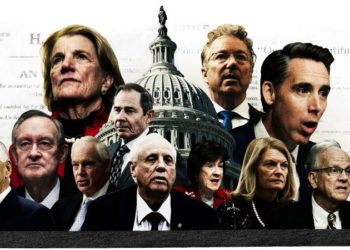A solid jobs report for May has reinforced the Federal Reserve’s stance that it can take its time before restarting interest rate cuts, an approach that drew renewed ire from President Trump on Friday.
Mr. Trump told reporters in the evening that his pick for the next chair of the Fed was coming soon and that he had a pretty good idea of whom he would select for the role, which Jerome H. Powell will vacate next May.
The comments followed a string of attacks on the Fed on Friday by Mr. Trump, who again railed against Mr. Powell for moving too slowly to lower interest rates. In posts on social media, the president called Mr. Powell “a disaster” and suggested that Fed policymakers cut rates by a full percentage point.
“He is costing our Country a fortune,” Mr. Trump wrote. “Borrowing costs should be MUCH LOWER!!!”
Officials have held interest rates steady since January amid extreme uncertainty about the economic outlook as a result of Mr. Trump’s policies. The central bank has signaled it will need to see clear signs that the labor market is weakening before lowering rates again, a higher bar than in the past given expectations that inflation could reignite this year.
Asked on Friday evening about Kevin Warsh, a former Fed governor who is seen as a front-runner to be named chair and nearly got the position in Mr. Trump’s first term, the president said, “He’s very highly thought of.”
The next Fed opening that Mr. Trump will be able to fill is in January, when Adriana Kugler’s term as a governor is set to expire. He recently had to opportunity to appoint a new vice chair for supervision, Michelle Bowman, who was confirmed by the Senate on Thursday.
Ms. Bowman, who joined the Fed as a governor in 2018 after Mr. Trump nominated her in his first term, unveiled plans on Friday to ease a number of rules on how banks will be supervised and regulated in her first major speech in the role.
What is making current Fed officials wary about lowering interest rates are the president’s tariffs, the scope and scale of which have repeatedly changed since his return to office. That whiplash has left businesses and policymakers in limbo, uncertain how significantly these policies will cause prices to rise and growth to slow.
After reaching its lowest level in more than 50 years in 2022, unemployment has edged up as companies have slashed the number of available positions and slowed hiring. Fewer Americans are quitting their jobs, muting wage growth. Jobless claims are up, although layoffs have stayed low.
Friday’s jobs data showed that the labor market is continuing to lose momentum but is not yet cracking: Employers added 139,000 jobs last month, and the unemployment rate was stable at 4.2 percent.
Haunted by pandemic-era staffing issues, companies appear hesitant to let go of employees. Instead, they have opted to cut back on hours or institute more flexible schedules.
That is the takeaway from Beth Hammack, president of the Federal Reserve Bank of Cleveland, who spoke to businesses across Cincinnati this week. She said she had heard nothing in those conversations to suggest that the Fed needed to immediately lower borrowing costs, even if business owners are on edge.
“I legitimately do not know which way this is going to break,” she said in an interview.
The labor market looks healthy, Ms. Hammack said, and with inflation not yet back to the Fed’s 2 percent target, she suggested that interest rates should be at a high enough level to continue weighing slightly on demand.
“I would rather wait and move quickly to play catch-up if I really don’t know what the right next move is,” Ms. Hammack added. “And right now, I really don’t know what the right next move is based on all of the information and policies that we’re responding to.”
Colby Smith covers the Federal Reserve and the U.S. economy for The Times.
The post Jobs Report Bolsters Fed’s Patient Approach on Rate Cuts, Drawing Trump’s Ire appeared first on New York Times.




